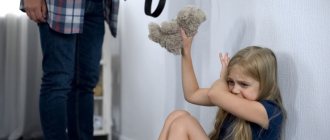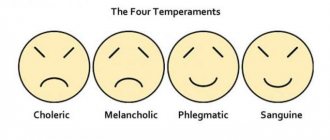What is trichotillomania and ICD 10 code
Trichotillomania (code according to the international classification of diseases F 63.3) – pulling out hairs on any part of the body. Typically, patients depilate themselves using their hands. Sometimes objects are used for this purpose - tweezers, pins, needles. The process is complemented by playing with hair, eating it, and biting nails. The causes of the disorder most often lie in the psychological status of the person. Often patients hide their attraction. Such secrecy is inherent in male patients. The main contingent of those suffering from the disease are teenage girls whose problem was noticed by their parents.
Areas subject to auto-depilation:
- face (eyelashes, eyebrows);
- limbs;
- breast;
- stomach;
- head;
- pubis.
If trichotillomania is suspected, the patient is consulted and examined by a dermatologist and psychiatrist, followed by a questionnaire and a trichogram (diagnosis of the condition of the hair and scalp).
This diagnosis is not made after skin inflammation precedes such behavior, or in cases where autodepilation is a reaction to delusions and hallucinations.
How to grow long eyelashes at home?
The eyelids are a very delicate and delicate area on the face that requires special care. The growth of eyelashes also depends on its condition. You should definitely use eye cream; it will not only help maintain the attractive appearance of your skin, but will also serve as an additional source of nutrition for the hair follicles. Regular face cream is not suitable, its formula is too heavy for this area. Massage gives a good result; the eyelid is saturated with capillaries and their stimulation has a beneficial effect on the follicles. You just need to do it very gently, with your ring finger, since it is the weakest on your hand. Light pats and massaging movements will ensure better absorption of the cream and a flow of blood and nutrients. You can’t go to bed with makeup not washed off, it clogs pores and disrupts oxygen exchange.
READ ALSO: Calendula tincture for acne - a panacea or a myth
Brasmatic should be changed every 3-4 months. With the forward movements of the brush, oxygen and bacteria enter the middle of the tube, which change the structure of the cosmetics. It is strictly forbidden to buy mascara in spontaneous markets, in places where it cannot be stored properly.
If these rules are violated, even high-quality products can turn into a substance with unknown parameters and provoke inflammation or allergies.
The composition of high-quality cosmetics includes caring components: panthenol, elastin, collagen and natural wax.
It is advisable to train yourself not to sleep with your face buried in the bed. This position injures the hairs of the eyelashes, they break and bend in unnatural directions.
It’s good to make nourishing masks and lubricate your eyelashes with special serums and conditioners. Such products are presented in the lines of many manufacturers, both expensive, branded, and more budget ones.
Psychological reasons
The pathogenesis of the disease is explained by psychological and physiological aspects. The skin is well innervated by a network of nerve fibers. Due to their significant sensitivity, it becomes a target for relieving tension and getting rid of negative emotions. Pulling out, being a kind of self-punishment, is accompanied by noticeable discomfort and burning, which switch the patient’s concentration from his suspiciousness, anxiety, and depression to physical suffering. By performing such actions, the patient subconsciously reacts to increased demands placed on him by others. He hopes that their criticism and accusations, going through the pain, will disappear or decrease. In stressful, traumatic situations, the body acts as an object whose actions can be clearly controlled.
Need advice from a beauty expert?
Get advice from a beauty expert online. Ask your question right now.
ask a free question
Sometimes trichotillomania is an independent mental illness. In some cases, it acts as a complication of OCD (obsessive-compulsive disorder), a manifestation of manic-depressive psychosis, exogenous brain damage, schizophrenia, senile dementia, and mental retardation.
Reasons for self-depilation in a child:
- high demands on his behavior;
- criticism of school performance;
- hypercontrol;
- change of place of study;
- parental divorce;
- emergency guardianship;
- constant comments.
Auto-depilation acts as a means of distraction from reality, self-punishment. In an adult patient, the development of pathology involves psychosomatics and metaphysical causes of trichotillomania. The trigger mechanism for the disease can be stress or any traumatic experience.
What to put on your eyelashes to make them grow
Homemade recipes for products that stimulate eyelash growth are not inferior in effectiveness to purchased analogues. In addition, they have advantages over ready-made ones:
- Natural;
- Inexpensive;
- Suitable for allergy sufferers, as it is possible to choose components that are safe for yourself.
READ ALSO: Getting rid of wrinkles with drugs from the pharmacy: Dimexide and Solcoseryl
They can be applied as a lotion or compress. Apply moistened discs to your eyelids, turn on your favorite music and lie down, giving yourself 5-10 minutes of relaxation with benefits for beauty. Or, with a thoroughly washed mascara brush or a specially designated soft toothbrush, cover the eyelashes with the composition.
Treatment methods
A dermatologist, psychiatrist or psychotherapist, and rarely a neurologist, investigates the causes and treats trichotillomania. Therapy includes a number of areas of work with the patient. Cognitive behavioral therapy is carried out with the help of a psychotherapist or clinical psychologist. Aimed at replacing a pathological behavioral pattern. At the initial stage, it is important to learn to recognize the abnormal impulse to pull out hair, the attraction to action, and be able to identify situations that provoke it. Patients learn relaxation techniques. He receives strategies for other possible behaviors. Hypnosis is effective as a method of instilling new behavioral attitudes.
Treatment by a psychiatrist usually involves the use of psychopharmacotherapy. Research data on the effectiveness of these products for self-depilation is controversial. The doctor develops a treatment regimen, taking into account the clinical picture of the disease and accompanying mental illnesses.
The following drugs are used for patients with trichotillomania:
- selective serotonin reuptake inhibitors (fluoxetine);
- opioid receptor antagonists;
- neuroleptics;
- lithium-based products;
- tranquilizers;
- central nervous system stimulants.
A patient with trichotillomania must be examined by a dermatologist. The doctor pays attention to the number and shape of areas of baldness or thinning hair. An analysis of the skin condition is carried out. It is important to consider whether there is coarsening of its areas, peeling, ulcers, redness, swelling. The doctor tries to understand whether the mouths of the follicles are visible, whether there are hairs of different lengths, broken hairs, or stubble. Local therapy is prescribed by a dermatologist according to the symptoms of the disease. Antiseptics are used and injected into alopecia areas. These include miramistin, chlorhexidine, antibiotic ointments, anti-inflammatory drugs, and when a mycotic infection occurs, antifungal agents. Hair growth stimulants may be prescribed. At home, lotions with garlic and onion juice, masks with burdock oil, and red pepper are used.
If there is a persistent fact of denial of the problem, the presence of foci of baldness, it is necessary to conduct an analysis in order to identify skin mites, consult an endocrinologist for possible identification of hormonal disruptions in the body.
Is it possible to cure the disease and how long will it take?
Usually, with a comprehensive systemic approach, the disease can be overcome. This happens faster in preschool children. An older patient will take longer to heal. If the condition is a consequence of a mental disorder, its symptoms can only be dealt with by eliminating the underlying cause.
When working with a young patient, it is important to focus the attention of his parents on the need to change their behavior towards the child. They must smooth out criticism, eliminate hypercontrol and guardianship, and reduce the level of demands. People of all ages need timely stress relief. For these purposes, you can engage in physical education, art, etc.
If parents notice eyelash or hair pulling out in a child or loved one, it is important to seek medical help as soon as possible. Long-term continuation of trichotillomania is complicated by physical and mental disorders. The patient limits social contacts, expecting questions and ridicule from others. The risk of depression, various phobias, alcoholism, drug addiction, and abnormal eating behavior increases. Somatic complications can be represented by local infections of the skin and eyes. If the patient swallows hairs, there may be a risk of intestinal collapse caused by the formation of “hair stones” (trichobezoars).
Specific prevention of the disease consists of relieving emotional stress, minimizing fears, stress, anxiety, increasing self-esteem, and increasing social activity. If you suspect trichotillomania, you should immediately consult a doctor.
Daughter tears eyelashes (trichotillomania)
The “psychologist” section again received several questions. I am pleased with your trust in this blog and your desire to help your child. I’m slowly sorting out life’s “tasks” in order.
Irina
Hello! My eldest daughter is 6.5 years old. She tears her eyelashes. She scolded and explained - it was useless. The eyes are almost “bald”! What to do!
Tatiana Egorova
Irina, hello.
The desire to tear out one's eyelashes belongs to the group of obsessive-compulsive neuroses. Experts regard this as a disease called trichotillomania .
We must warn you that it is serious and requires psychotherapeutic and/or medicinal treatment, which can be carried out by a psychotherapist. Try to find a good child psychotherapist who will look at your daughter, talk to her and you, and prescribe special treatment.
Why is this necessary?
First, let me explain a little what trichotillomania is .
In the medical literature, this term refers to compulsive pulling out of hair, eyebrows, and eyelashes . It mainly occurs in girls and women, and there are no age restrictions, i.e. This disease affects children, teenagers, and even older people equally.
Many, having fallen ill since childhood, continue to live with this obsessive condition, slowly depriving themselves of hair, eyebrows, and eyelashes. When there is nothing left that can be pulled out, they wear wigs and false eyelashes. Thus, if you do not work with this problem, it remains for life.
Unfortunately, no requests, explanations or reproaches will help here. For one simple reason, that this desire is uncontrollable by consciousness . A person tears out his hair, eyelashes or eyebrows purely automatically, receiving satisfaction from the process, which he is unable to explain. It's like a drug. That’s why it’s called an “obsessive” state.
What is the cause of trichotillomania?
Trichotillomania does not occur out of nowhere.
In rare cases, there may be gene disorders , but so far research is being conducted in this direction and nothing can be said specifically.
Here's another reason. Children are naturally curious . They can spy on their mother as she plucks her eyebrows for beauty purposes, conduct an experiment on themselves and... continue because they “liked it.” Later, addiction arises.
But this occurs as an exception to the rule.
In reality, trichotillomania is very often preceded by some kind of emotional shock or stress . In children, it can occur in response to mental trauma received in the family or outside the family. A child may experience a feeling of rejection in his own family for various reasons (here you need to specifically clarify the key points in a conversation with parents and the child); he may fear that he is not loved, not appreciated, that he is disturbing someone. Or something happened to the child outside the home (in kindergarten, on the street, at a party, etc.)
You write that your girl is the eldest. Maybe this is a reaction to the appearance of a brother or sister? Here you need to know exactly when she started pulling out her eyelashes. Analyze time and compare facts.
If low self-esteem develops against the backdrop of an unfavorable family environment , then pulling out eyelashes is a kind of desire to attract attention, to gain at least a little bit of confidence that the parents really saw the child’s suffering. In this case, there is a lack of parental attention, love, empathy and encouragement .
If self-esteem is inflated (and this also happens, oddly enough), then such an incident of depriving oneself of hair may indicate demonstrative behavior, the purpose of which is to attract the attention of everyone (not just parents). Like, look at me, what you've brought me to..
In addition, hair pulling can serve as a compensatory mechanism in case of anticipation of some misfortune . By performing execution on himself, the child seems to sacrifice himself (his eyelashes, hair or eyebrows) in exchange for the successful avoidance of a fictitious or real impending tragedy.
Summary: the child is psychologically very uncomfortable and he is trying with all his might to get rid of this condition. And by pulling out hair, eyelashes or eyebrows, he thus calms down, relieves anxiety and tension within himself.
Is there a cure for trichotillomania?
Yes, it is being treated. And the sooner the better. It is important to find the true cause of trichotillomania and work to eliminate it . Then a favorable prognosis is real. An experienced child psychotherapist can help you with this.
You will need to honestly answer all his questions, try to express your vision of the problem and follow his treatment plan. Depending on the results of your daughter’s examination and conversation with you, the doctor may recommend a psychotherapeutic program that corrects family relationships or child-parent relationships, invite you to anxiety correction sessions, and offer relaxation techniques to relieve internal tension and fears. Sometimes medication may be required.
The duration of treatment and psychocorrection is quite long: from several months to several years, it all depends on the current condition of your daughter.
Irina, I want to encourage you, the problem can be solved .
I wish you a speedy solution to the problem, patience, love and wisdom in communicating with your daughter.
Is there something bothering you about your child? You can ask a psychologist a question .
Subscribe to RSS to receive all blog updates in a timely manner.
What else to read:
The child does not speak, only mumbles
Is it possible to send my daughter to spend the night with her grandmother?
First-grader doesn’t want to study, but wants to go to kindergarten







